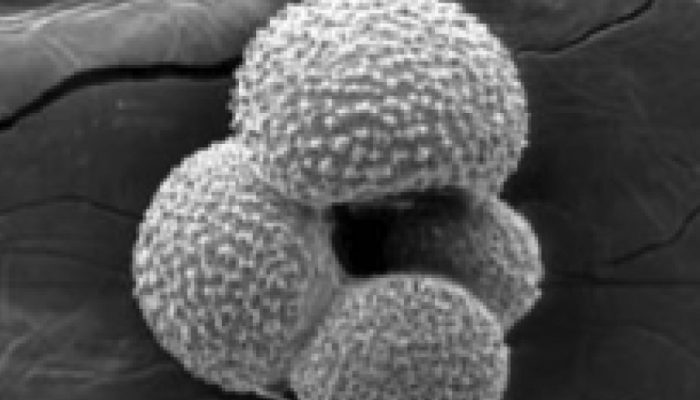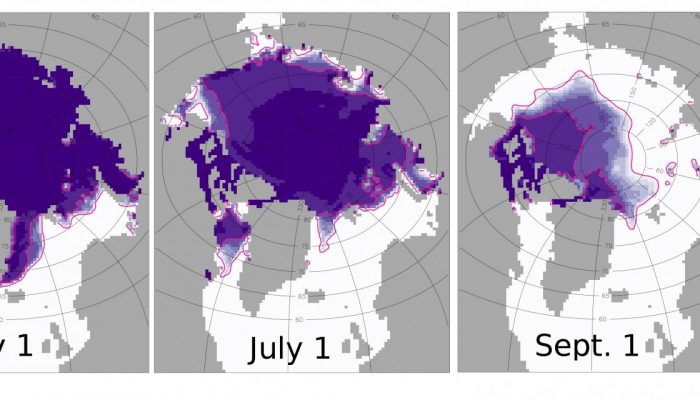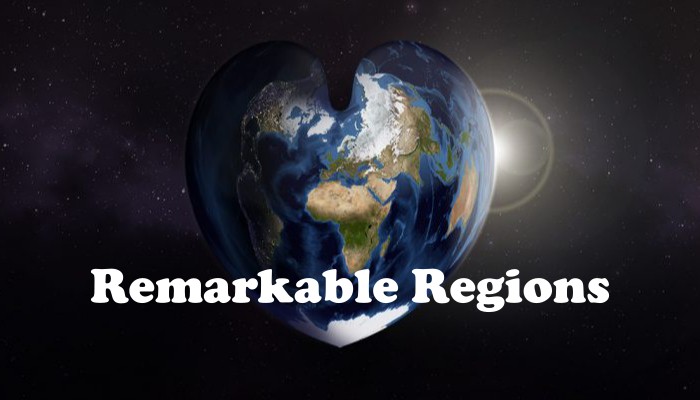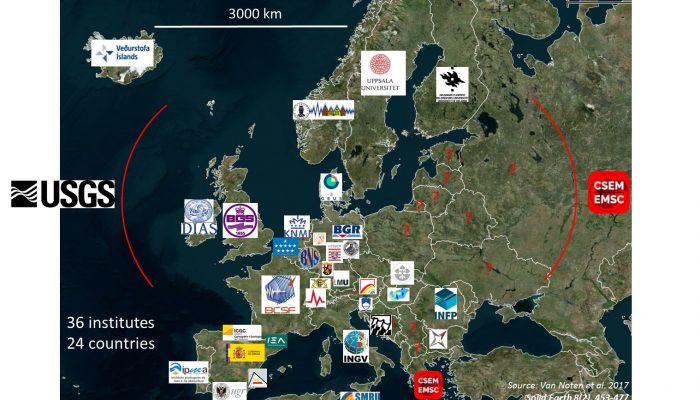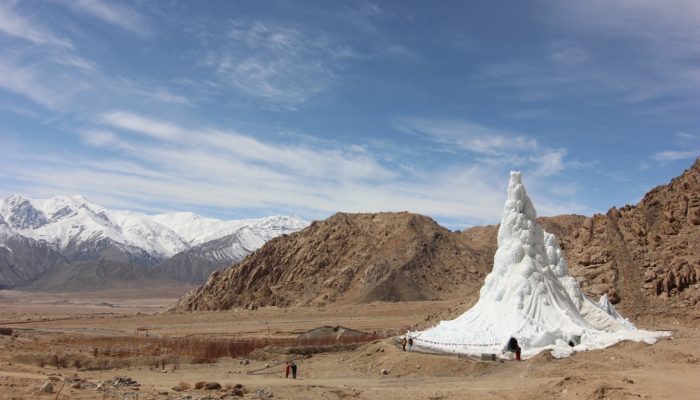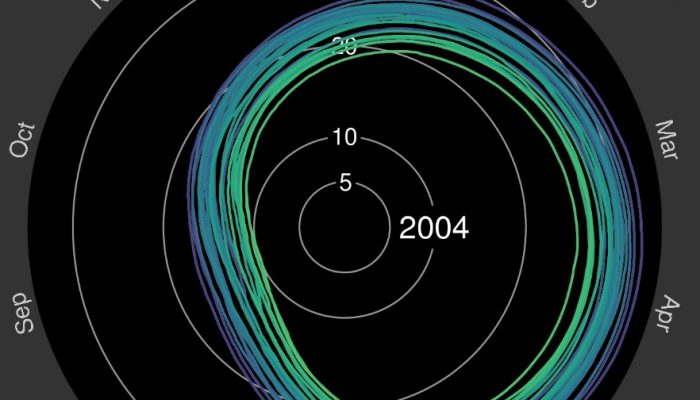Name of proxy Mg/Ca-SST on planktonic foraminifera shell Type of record Sea Surface Temperature (SST) Paleoenvironment Marine environments Period of time investigated 55 Million years ago to recent times How does it work ? Foraminifera (or Forams) are single-celled organisms varying from less than 1 mm to several cm in size. They are very abundant in the ocean floor (benthic species) or floating a ...[Read More]
Cryospheric Sciences
Image of the Week – Does size really matter? A story of ice floes and power laws
The retreating Arctic sea ice is one of the most well-known facets of Climate Change. Images of polar bears desperately swimming through polar seas searching for somewhere to rest and feed resonate strongly with the public. Beyond these headlines however, the Arctic Ocean is displaying a rapid transition from having mostly permanent ice cover to a more seasonal cover. The Marginal Ice Zone As both ...[Read More]
Geodynamics
Alaska: a gold rush of along strike variations
Every 8 weeks we turn our attention to a Remarkable Region that deserves a spot in the scientific limelight. After exploring the Mediterranean and the ancient Tethys realm, we now move further north and across the Pacific to the Aleutian-Alaska subduction zone. This post was contributed by Kirstie Haynie who is a PhD candidate at the department of geology at the University at Buffalo, State Univer ...[Read More]
Seismology
Crowdsourcing in Europe: how to share macroseismic data of felt earthquakes ?
“Did you feel the earthquake ?” “Avez-vous ressenti un tremblement de Terre?” “Erdbeben gespürt?” ” Følte du siste jordskjelv?” “Sentiu um Sismo?” “Ha sentido algún terremoto?” “Pocítili ste zemetrasenie?” “Hai Sentito il Terremoto?” “почувствахте ли земетрес ...[Read More]
Cryospheric Sciences
Image of the Week – Ice Stupas: a solution for Himalayan water shortage?
As the world searches for practical innovations that can mitigate the impact of climate change, traditional methods of environmental management can offer inspiration. In Hindu Kush and Karakoram region, local people have been growing, or grafting, glaciers for at least 100 years. Legend has it that artificial glaciers were grown in mountain passes as early as the twelfth century to block the advan ...[Read More]
Geomorphology
Getting to know the GM presidency candidates: #2 Jens Turowski
During the EGU Election Autumn 2017, all EGU members are asked to give their vote for the next EGU Union President, General Secretary and the Division Presidents until 30 November 2017. The Geomorphology division is in the luxurious situation of having three candidates for division presidency, all of which gathered experience as active members of the EGU GM division structure. In order to get to k ...[Read More]
Solar-Terrestrial Sciences
EGU for Early Career Scientists
Are you a student, or have obtained a MSc or PhD degree within the past 7 years? If yes, you are an Early Career Scientist! In the EGU we take great care of the young scientists, and offer a wide range of opportunities, mostly associated with the General Assembly. My name is Jone Peter Reistad and I am the Early Career Scientist (ECS) representative in the Solar-Terrestrial division. My role is to ...[Read More]
Geodynamics
The quest of a numerical modelling hero
Numerical modelling is not always a walk in the park. In fact, it resembles a heroic quest more often than not. In this month’s Wit & Wisdom post, Cedric Thieulot, assistant professor at the Mantle dynamics & theoretical geophysics group at Utrecht University in The Netherlands, tells the story of his heroic quest to save the princess from the dragon clear a code from bugs and shows ...[Read More]
Geodesy
So we produced this big pile of GIS data, what now?
We all know that easy access to data speeds up doing research. In this post, we will discuss how open GIS data can stimulate innovative ways of doing research in the field of geodesy and geosciences, considering first the benefits and challenges of open data. Geodesy can benefit greatly from the open data movement and from open Geographic Information System (GIS) data. The reasons for this are two ...[Read More]
Cryospheric Sciences
Image of the Week — Climate change and disappearing ice
The first week of the Climate Change summit in Bonn (COP 23 for those in the know) has been marked by Syria’s decision to sign the Paris Accord, the international agreement that aims at tackling climate change. This decision means that the United States would become the only country outside the agreement if it were to complete the withdrawal process vowed by President Trump. In this context ...[Read More]

